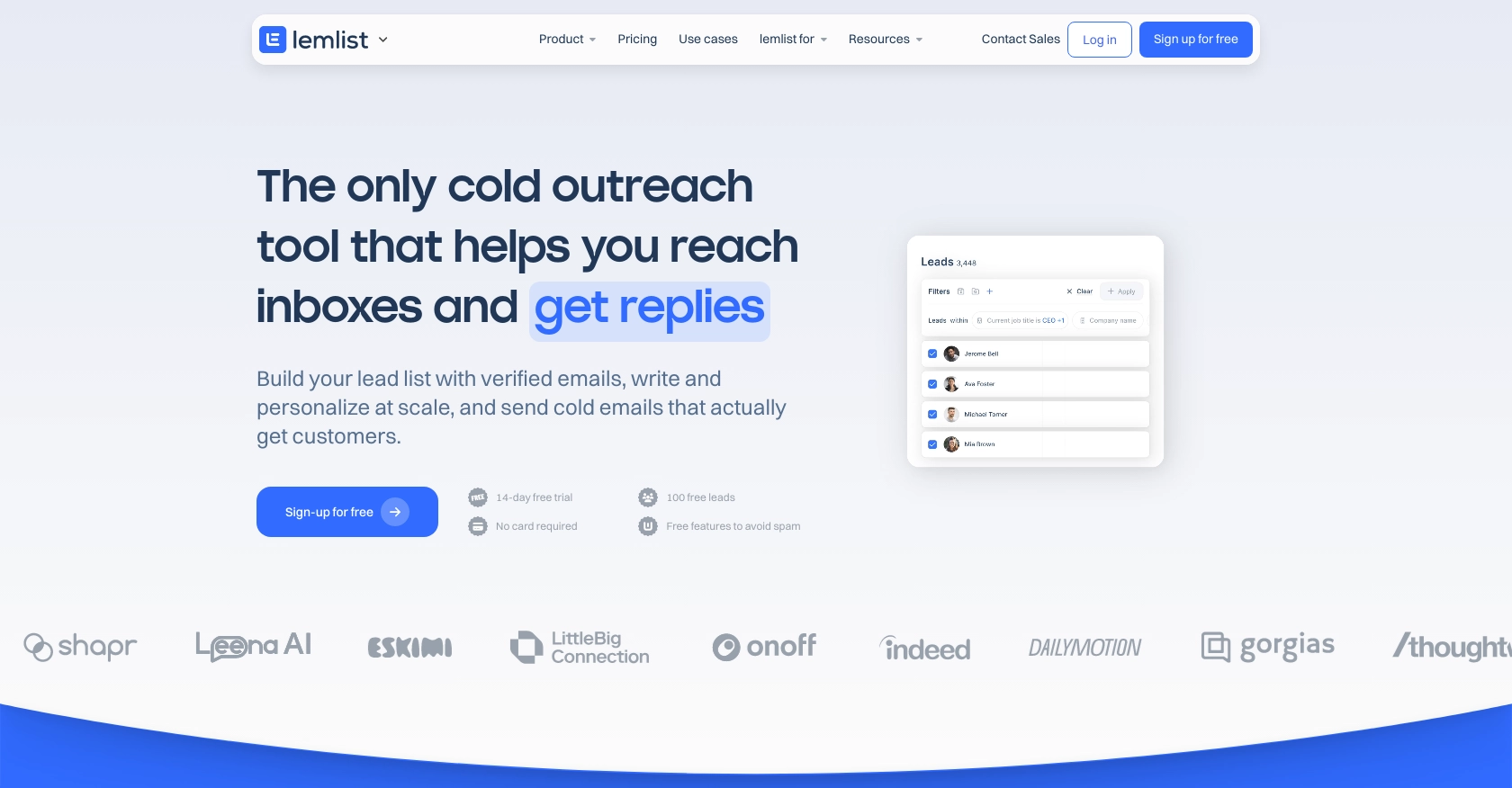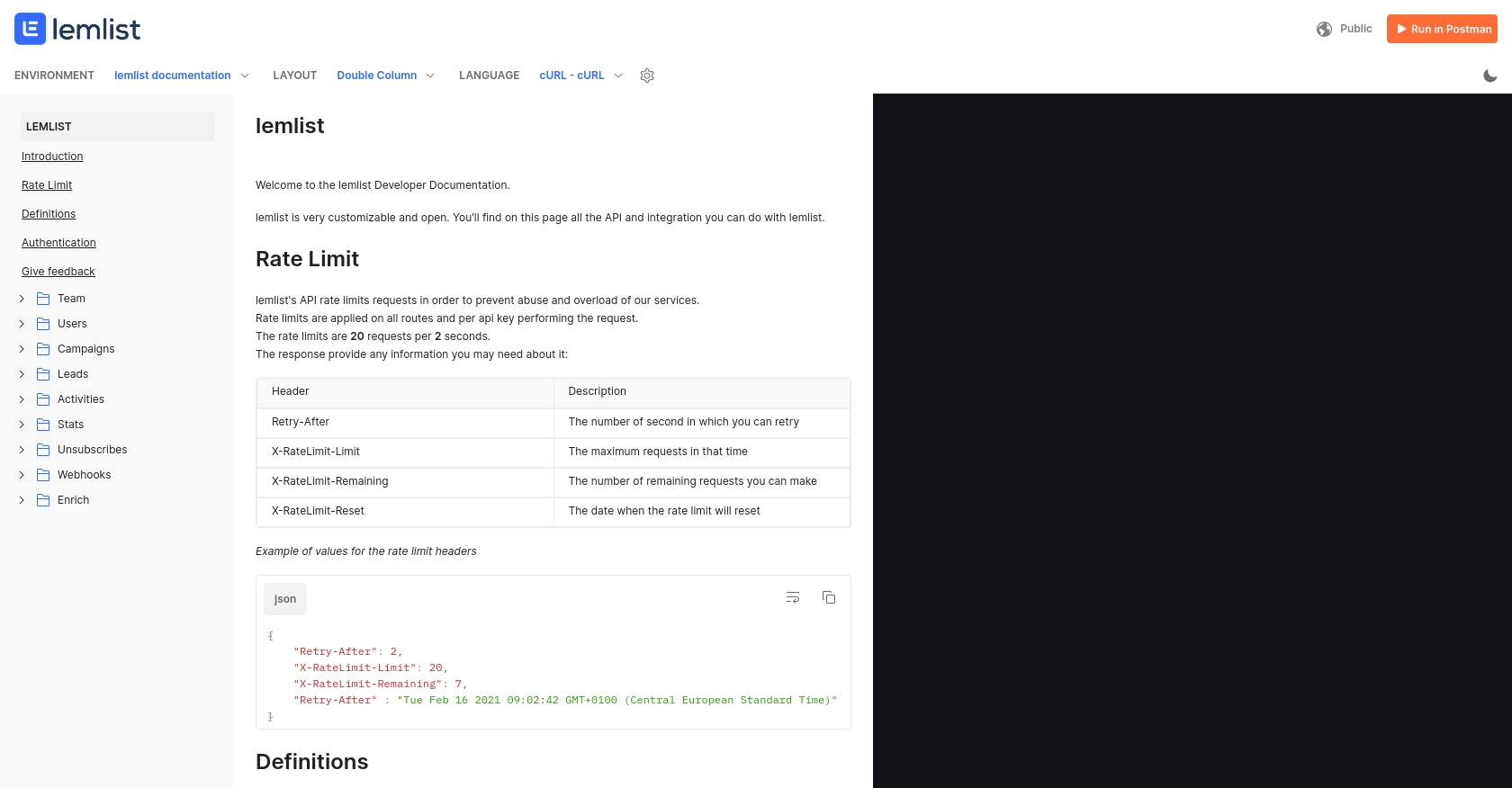How to Create or Update Leads with the Lemlist API in Python

Introduction to Lemlist API Integration
Lemlist is a powerful email outreach platform designed to help businesses personalize and automate their email campaigns. It offers a range of features that enable users to engage with leads effectively, track campaign performance, and optimize outreach strategies.
Integrating with the Lemlist API allows developers to streamline lead management processes, such as creating or updating leads directly from their applications. For example, a developer might want to automatically update lead information in Lemlist based on interactions from a CRM system, ensuring that outreach campaigns are always targeting the most up-to-date contacts.
Setting Up Your Lemlist Account for API Integration
Before you can start creating or updating leads with the Lemlist API, you'll need to set up your Lemlist account and obtain the necessary API key for authentication. This section will guide you through the process of setting up your account and generating an API key.
Creating a Lemlist Account
If you don't already have a Lemlist account, follow these steps to create one:
- Visit the Lemlist website and click on the "Sign Up" button.
- Fill in the required information, such as your email address and password, to create your account.
- Once your account is created, log in to access the Lemlist dashboard.
Generating an API Key for Lemlist
To interact with the Lemlist API, you'll need an API key. Follow these steps to generate your API key:
- Log in to your Lemlist account and navigate to the "Settings" section.
- In the settings menu, find the "API" tab and click on it.
- Click on the "Generate API Key" button to create a new API key.
- Copy the generated API key and store it securely, as you'll need it to authenticate your API requests.
With your Lemlist account set up and your API key ready, you're now prepared to integrate with the Lemlist API using Python. In the next section, we'll cover how to make API calls to create or update leads.

sbb-itb-96038d7
Making API Calls to Create or Update Leads with Lemlist in Python
To interact with the Lemlist API for creating or updating leads, you'll need to use Python. This section will guide you through the necessary steps, including setting up your environment, writing the code, and handling potential errors.
Setting Up Your Python Environment for Lemlist API Integration
Before you begin, ensure you have the following prerequisites installed on your machine:
- Python 3.11.1
- pip, the Python package installer
Next, install the requests library, which will be used to make HTTP requests to the Lemlist API:
pip install requestsCreating or Updating Leads with the Lemlist API Using Python
Now that your environment is set up, you can proceed to write the Python code to create or update leads in Lemlist. Below is an example of how to perform these actions:
import requests
# Set the API endpoint for creating or updating leads
url = "https://api.lemlist.com/leads"
# Set the request headers
headers = {
"Content-Type": "application/json",
"Authorization": "Bearer Your_API_Key"
}
# Define the lead data
lead_data = {
"email": "example@lemlist.com",
"firstName": "John",
"lastName": "Doe",
"company": "Example Corp"
}
# Make a POST request to create or update the lead
response = requests.post(url, json=lead_data, headers=headers)
# Check the response status
if response.status_code == 200:
print("Lead created or updated successfully.")
else:
print(f"Failed to create or update lead. Status code: {response.status_code}")
Replace Your_API_Key with the API key you generated earlier. The code above sends a POST request to the Lemlist API, including the lead data in JSON format. If the request is successful, you'll receive a confirmation message.
Verifying API Call Success and Handling Errors
After executing the code, you can verify the success of the API call by checking your Lemlist dashboard for the newly created or updated lead. If the request fails, the response will include an error code that you can use to troubleshoot the issue.
Common error codes include:
- 400 Bad Request: The request was malformed. Check your JSON syntax and required fields.
- 401 Unauthorized: The API key is missing or invalid. Ensure your API key is correct.
- 500 Internal Server Error: An error occurred on the server. Try again later.
For more detailed error information, refer to the Lemlist API documentation.
Conclusion and Best Practices for Lemlist API Integration
Integrating with the Lemlist API using Python provides a powerful way to manage leads efficiently, ensuring your email outreach campaigns are always targeting the most relevant contacts. By following the steps outlined in this guide, you can seamlessly create or update leads, enhancing your marketing automation efforts.
Best Practices for Secure and Efficient Lemlist API Usage
- Secure API Key Storage: Always store your API keys securely, using environment variables or a secure vault, to prevent unauthorized access.
- Handle Rate Limiting: Be mindful of any rate limits imposed by Lemlist to avoid exceeding the allowed number of requests. Implement retry logic with exponential backoff if necessary.
- Data Standardization: Ensure that the data you send to Lemlist is standardized and validated to prevent errors and maintain consistency across your systems.
Streamlining Integrations with Endgrate
While integrating with Lemlist directly is a great start, managing multiple integrations can become complex and time-consuming. Endgrate offers a unified API solution that simplifies this process, allowing you to focus on your core product while ensuring seamless integration experiences for your customers.
By using Endgrate, you can build once for each use case and leverage a single API endpoint to connect with multiple platforms, including Lemlist. This not only saves time and resources but also enhances the overall efficiency of your integration strategy.
Explore how Endgrate can transform your integration approach by visiting Endgrate's website and discover the benefits of a streamlined, intuitive integration experience.
Read More
Ready to get started?
